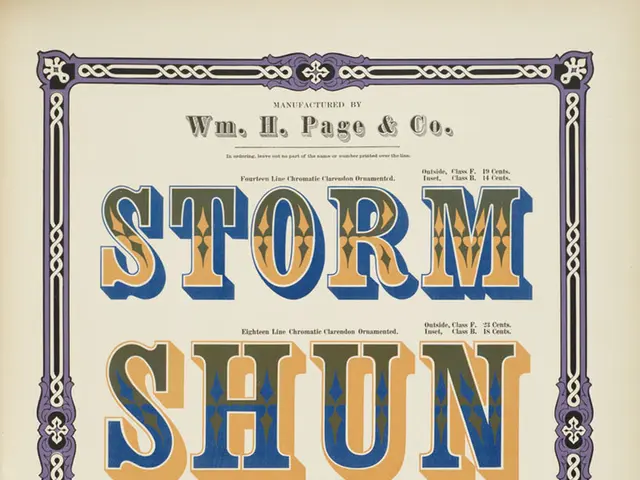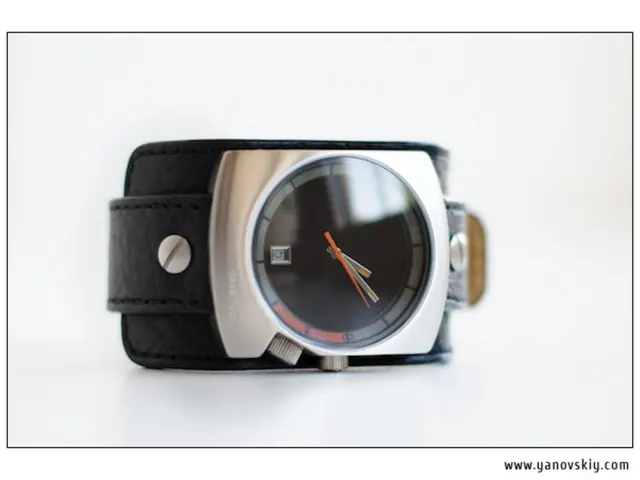Customizing microscope slides offers enhanced exploration: Follow this guide to craft personalized slides.
Peering into the fascinating, miniature world behind a microscope is an exhilarating experience that goes beyond the typical store-bought slides. With the thrill of DIY projects, creating your own microscope slides can be just as delightful and ultimately rewarding.
When choosing between temporary or permanent mounts, the selection depends on the curious specimen you plan to observe. Remember, the safety of those involved is crucial - opt for safe materials for kids, like plastic, in home projects, and properly handle and dispose of biological matter to avoid spreading afflictions.
New to the world of microscopy? Investing in one of the best microscopes for kids or students is the first step. To help you dive deeper, a well-equipped slide box should hold the following essentials:
- Ground glass slides, perfect for smoother edges and reduced risk of cuts.
- Depression concave well slides, ideal for examining water samples, single, double, or triple specimens with smooth edges and corners.
- Cover slips, a thin glass or plastic plate used to contain the specimen.
- Scotch tape, a versatile adhesive useful for transferring and securing items.
- Clear nail varnish, helping to set your sample in place while preserving it for future viewing.
- And more, such as pipettes, tweezers, beakers, cotton buds, cocktail sticks, iodine, methylene blue, eosin, glycerine, disinfectant, and markers.
But don’t underestimate the variety of samples that can be mounted effortlessly without specialized equipment.
Choosing the Right Slide
When deciding which slides suit your needs, consider who will be using them, the probable specimens, and, of course, cost.
Plastic slides are budget-friendly and safer for younger children. They are impact-resistant, making them the perfect choice for the best microscopes for kids. Though they are easily scratched and prone to warping, plastic slides come in handy in such cases.
In contrast, glass slides offer superior optical quality, clearer images, durability, and chemical resistance, being the preferred choice for most microscopy projects. These are suitable options for home or educational purposes. Make sure to invest in well-cleaned slides for the best results.
Sign up now to receive our daily newsletter, shining light on the world's intriguing discoveries.
For those passionate about exploring living organisms in water samples, treat yourself to some concave well slides. Single, double, and triple depression concave slides are available with smooth edges and corners. Some also include frosted panels for writing on, useful for labeling samples intended for future use.
Pipettes are indispensable for transferring liquids in tiny quantities, while tweezers allow the hassle-free transfer of solid samples onto your slide. Mounted needles simplify the correct positioning of cover slips, preventing air bubbles.
Upon preparation of your permanent slides, you'll appreciate neatly-organized, dust-free storage with slot dividers and numerical documentation.
Dry Mounting
The simplest method to observe something under the microscope is through dry mounting. This easy technique might involve placing your specimen directly on the stage, or, for smaller, lighter particles, on a slide on the stage. Examples of objects suitable for dry mounting include torn paper, feathers, string, hair, natural fibers, or wool for larger objects.
For smaller particles, like pollen or soil, position them on a slide before placing on the stage. They may be challenging to move otherwise.
It's worth noting that covering your samples with a cover slip enhances safety and flattens your sample, making focusing more manageable when the specimen lies in a horizontal plane.
Alternatively, Scotch tape can serve as a top layer, both securing the matter and adhering it effectively to the slide.
Wet Mounting
Substances that are prone to dehydration require wet mounting to extend their lifespan. Adding a drop of water keeps the specimen looking fresh for a while, especially for biological tissues and cells.
When wet mounting, try using glycerine for plant samples, as it helps prevent dryness and shrinkage. For preserving the cell membranes of bacteria, saline is a suitable option.
Remember to use only a small drop of liquid, so it doesn't seep beyond the coverslip edges. Sensitive living creatures will also require water from their natural environment to ensure the microscope slide maintains the proper environment.
Amplify your home microscopy experience by purchasing stains to observe your samples under a new perspective. Iodine highlights cell membranes and nuclei, methylene blue increases contrast between cells and their background, and eosin stains collagen, muscle, cytoplasm, and red blood cells.
Using a Coverslip
Coverslips are thin, delicate glass plates that cover your sample, withstand the weight of your objective lens, and prevent contamination. They are easily broken, so handle them with care, and adults should manage their distribution to children.
To avoid fumbling, practice the correct method of placing and positioning the coverslip on your slide. Place the coverslip with a drop of your chosen stain at its edge, next to the prepared sample. Hold a mounted needle at a 45-degree angle, then gently lower the coverslip onto the specimen. Take care not to move or press the coverslip down, as this may distort the specimen. The surface tension of the liquid on the slide will help keep it in place.
Excess liquid should distribute evenly across the coverslip without escaping. Tissue paper can be used to gently remove any excess liquid.
Temporary wet mount slides can be washed, dried, and reused after proper disinfection of those containing body tissue or saliva. To create permanent slides, you may opt to set your sample using clear nail varnish before adding a coverslip.
Crafty Alternatives
If you find yourself in a pinch and lacking necessary materials, improvise with everyday objects:
- Laminating: This technique is perfect for storing flat samples, like paper, feathers, sand, or pollen, permitting preservation for permanent display. Simply press your desired item between two layers of laminating sheets and follow the manufacturer's instructions for a crisp, protective replica of your specimen.
- Scotch tape: Another useful alternative for picking up or transferring specimens, rather than affixing them to a slide, you can stick the tape directly onto stiff card with a 1 cm hole. The rigidity of the card helps keep the tape flat, serving as an effective stand-in for a glass slide. Cut to 7.5 cm x 2.5 cm, this makeshift slide of the right size.
- Creative Decor: In the 1800s, themed paper slide wraps were utilized in Paris to hold cover slips in place. Today, this practice can be continued for aesthetic reasons. Paper slides can be wrapped around the outside of your glass or plastic slides, beautifying permanent creations. Alternatively, a single sheet of paper can be sandwiched between multiple laminations, featuring your chosen sample, wrapped and sealed for a fun, artistic touch.
When delving into the world of microscopy, one should consider investing in a variety of slides for different purposes. For younger children, plastic slides are safer and budget-friendly, while glass slides offer better optical quality for most projects. Concave well slides are ideal for examining water samples, and pipettes and tweezers are invaluable tools for transferring liquids and solid samples respectively.
For true enthusiasts, it's worth experimenting with alternative mounting methods to extend the lifespan of delicate specimens. Wet mounting, using glycerine or saline, can help preserve cell membranes and biological tissues. Remember to handle coverslips carefully to prevent breakage and distribute the liquid evenly without causing distortion.
In a pinch, one can improvise by using lamination techniques to preserve flat samples, or Scotch tape to transfer specimens. Creativity can also be applied to the presentation of permanent slides, using decorative paper wraps for aesthetic purposes.








